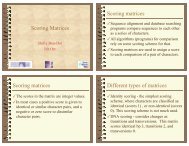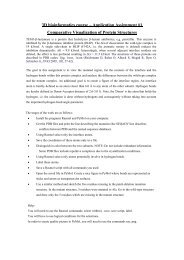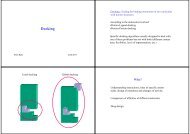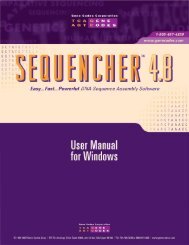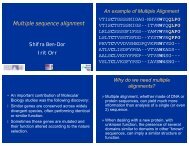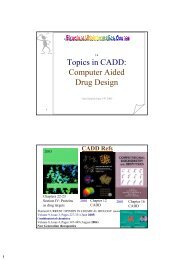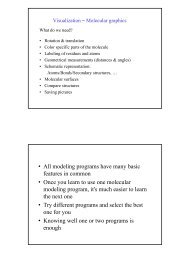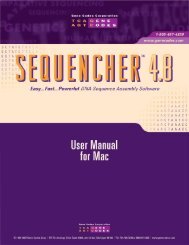Introduction to Phylogenetic Analysis
Introduction to Phylogenetic Analysis
Introduction to Phylogenetic Analysis
You also want an ePaper? Increase the reach of your titles
YUMPU automatically turns print PDFs into web optimized ePapers that Google loves.
Known Problems of Multiple Alignments<br />
♥ Low complexity regions - effect the multiple<br />
alignment because they create random bias<br />
for various regions of the alignment.<br />
♥ Low complexity regions should be removed<br />
from the alignment before building the tree.<br />
If you delete these regions you need <strong>to</strong><br />
consider the affect of the deletions on the<br />
branch lengths of the whole tree.<br />
How <strong>to</strong> choose a phylogenetic method?<br />
Choose set of related seqs<br />
(DNA or Proteins<br />
Strong similarity<br />
Maximum Parsimony<br />
Check validity of the<br />
results<br />
Obtain MultipleAlignment<br />
Is there a strong similarity?<br />
Distant (weak) similarity<br />
Distance methods<br />
Very weak similarity<br />
Maximum Likelihood<br />
Selecting sequences for phylogenetic<br />
analysis<br />
‡ Sequences that are being compared belong<br />
<strong>to</strong>gether (orthologs).<br />
‡ If no ancestral sequence is available you may<br />
use an "outgroup" as a reference <strong>to</strong> measure<br />
distances. In such a case, for an outgroup you<br />
need <strong>to</strong> choose a close relative <strong>to</strong> the group<br />
being compared.<br />
‡ For example: if the group is of mammalian<br />
sequences then the outgroup should be a sequence<br />
from birds and not plants.<br />
Taken from Dr.Itai Yanai<br />
Given a multiple alignment, how do we construct the tree?<br />
A - GCTTGTCCGTTACGAT<br />
B – ACTTGTCTGTTACGAT<br />
C – ACTTGTCCGAAACGAT<br />
D - ACTTGACCGTTTCCTT<br />
E – AGATGACCGTTTCGAT<br />
F - ACTACACCCTTATGAG<br />
?



